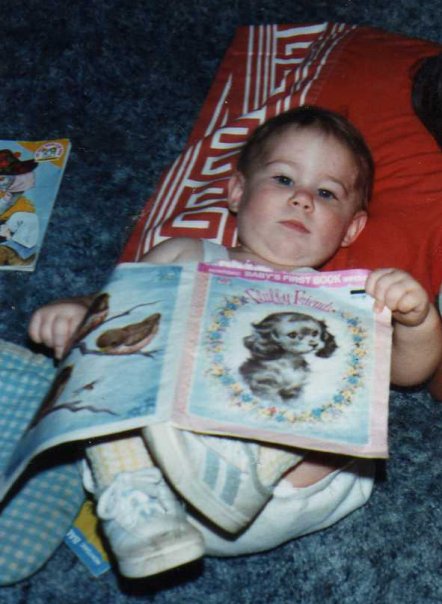I mentioned in my writing yesterday that I was going to talk more about the “cure mentality”, but I was going to focus specifically on this in relation to caregivers. Caregivers can include anyone that takes care of a person with a disability. It can mean parents, which is especially true for children with SMA (Spinal Muscular Atrophy), grandparents or other family members raising a child or taking care of an adult with a disability, PCAs, and even nurses. I am focused especially on parents and other family members and/or friends, because I believe they often have the best of intentions, for their child or children. However, they also are often the primary influence in helping their child develop their specific identity, as a person with SMA.
When we think of curing something, we often think that something is wrong. Something is broken that needs to be fixed. People with disabilities already face a lot of social stigma, which is why many parents have witnessed horrific treatment by able-bodied people, towards their children, in public. This is because, all over the world, but especially here in the United States, we live in a culture where we associate disability with negativity. A lot of this is perpetuated by how disability has been presented to the mainstream public.
Without getting too far off track, we often see depictions of disability on television or in films that are grossly inaccurate to the majority of the disability community’s experiences, living actual life as people with disabilities. This is both true of how we have been depicted on telethons, such as the Labor Day MDA telethon and in fictional programming. In order to raise money, the telethon has often tried to appeal to the sensitivities of viewers, by depicting the lives of those of us with SMA and other forms of neuromuscular diseases, as something to be pitied and feared, and for people to feel sorry for us. I get it. These organizations believe that the pity model will raise more money, as opposed to showing how independent and self-sufficient we can be, thanks to assistive technology and support from organizations getting us such things we need.
I personally believe that the latter model would raise money, but that is not my point. When I was growing up in the 1980s and 1990s, all I ever heard on the telethon was that people like me would die before we reached adulthood without a cure. We cannot ignore the fact that for some children with neuromuscular diseases, this is true, but far more of us than anyone expected have lived into adulthood. Many of us didn’t think it was possible, because that is what we were told, and grew up hearing, on television. I know I was not prepared for adulthood, for this reason. I was always told that I would have to live at home my whole life. I didn’t know I had options.
Telethons are not the only exposure our culture has to disability. The few films that actually depict disability see us as super humans, like Forrest Gump, who never could have really existed in the real world, objects of pity that seek to inspire and motivate the protagonist, such as Rain Man (Dustin Hoffman’s Rain Man inspired Tom Cruise to be a better man), bitter, alcoholic people who hate ourselves because we have a disability, a la Mary McDonnell in Passion Fish, or otherwise unrealistic characterizations of people with disabilities. We are seldom the protagonists, and often used as plot devices to further the story of the protagonist.
Society bases how to treat us, depending on how they see us portrayed in the media. Films, television shows, and other depictions matter. That is why there are filmmakers like me, who are fighting to change these depictions. However, you have to be the buffer, for now, between society and your child.
I know, as a parent, you want your child’s life to be as easy as possible. Having SMA can be a pain in the ass. Some days really suck, but this is your child’s life. What you need to be doing, is helping your child to shape their disability identity. Your child should be proud to be a person with a disability! They should know they are amongst some of the brightest, most hardworking, dedicated, innovative, people I know.
Stephen Hawking, one of the most brilliant minds in the world, is a person with a disability. Look at all he has accomplished. He cannot speak without a voice box, uses a trach, and cannot move without help, but he has attained worldwide fame. He has a family. He is a father. He has been married more than once. He has a lot of money. He has achieved his dreams and has his dream job.
That can be YOUR child. Never let your child sell themselves short. The truth is, we have no idea when or if treatment options will be available in our lifetime. We just don’t know, if they will be available. I have heard I’d be “cured” my whole life. For a long time, I believed there was something wrong with me. I believed I needed to be cured. When I stopped depending on the cure, and started living my life, as a proud person with a disability, all of the things I wanted to do with my life, have slowly become a reality.
You may not realize it, but your child hears you when you talk about a cure. I cannot tell you how many children I have seen who become very depressed, as they approach puberty. They feel alone. They feel there is something wrong with them. Other kids, the world, and society can and ARE cruel, but you can, at least, ensure that they have one place, where it is okay to be a person with a disability. It is okay to be themselves, at home, with you. They need your support now, more than ever.
I have seen many mothers and fathers, crying in front of their children, and speaking about how broken their children are. Some have spoken about how the cure is the only thing to make them “better”. There is truly no shame in treatment options, to eradicate the symptoms, and stop the progression, of SMA. But, we do not know when those treatment options will be here. I urge you to please consider what telling your child over and over about the “cure that may come” is doing to their self-esteem. It may not come soon, so how can you help them adapt to live life in the now, as a person with a disability?
I hear so often the term, normal. Parents want their children to be normal,, they say. Kids want to “be normal” like everyone else. What many do not realize is wheeling or walking with a limp or gait IS NORMAL. It is normal for us, and making any child feel like it’s not, can lead to suicidal thoughts, depression, anxiety, and other mental health issues.
Yes, let’s fight for treatment options that make our lives easier, but let’s also normalize the idea that it is beautiful to have a disability. Your child is beautiful just the way they are. They don’t need to be cured, because there is nothing wrong with them. They are not broken! They are perfect, wonderful, people, who can and will grow up to do whatever they put their mind to…with the right family support…with the right AT…and with the right motivation, which say they CAN do it!
If someone had told Stephen Hawking he couldn’t do it, because he wouldn’t be able to talk or breathe on his own, and he believed them, we would have lost one of the greatest minds of our generation. Stephen can benefit from treatment options, but look how he has defied odds, with NO treatment (or cure). He has still lived a full and meaningful life. So can your child. Be their biggest advocate, and help them develop their identity as a proud member of a disability community that welcomes them with open arms.


Comments